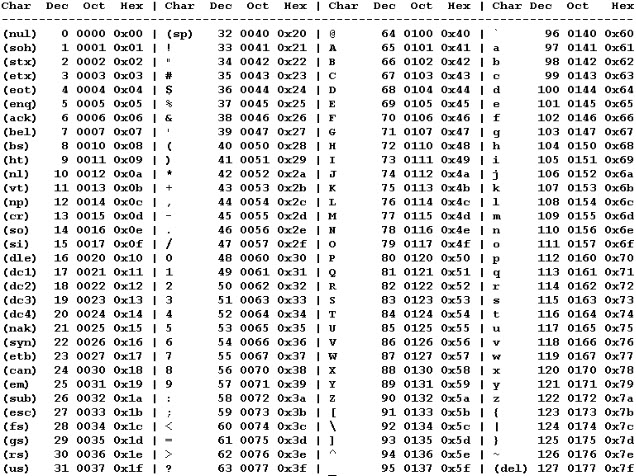Welcome to the fascinating world of ASCII, the American Standard Code for Information Interchange. ASCII is a character encoding standard used to represent text in computers, communication equipment, and other devices that utilize text. It’s a foundational element of modern computer communication and programming. In this beginner-friendly guide, we’ll explore the basics of ASCII and how to use this table effectively.
What is ASCII?
ASCII is a 7-bit encoding scheme capable of representing 128 different characters. These characters include English letters in both uppercase and lowercase, digits, punctuation marks, and a set of control codes used for special purposes, such as signaling the end of a line or the end of a file.
The Structure of the ASCII Table
The ASCII table is divided into two main sections: control characters (codes 0-31 and 127) and printable characters (codes 32-126). Control characters don’t have a graphical representation but are crucial for managing text and data streams. Printable characters are the ones you can see and print.
Here’s a simplified representation of the ASCII table:
Dec Char Dec Char Dec Char Dec Char
--------- --------- --------- ----------
0 NUL (null) 32 SP (space) 64 @ 96 `
1 SOH (start of heading) 33 ! 65 A 97 a
2 STX (start of text) 34 " 66 B 98 b
... ... ... ...
31 US (unit separator) 63 ? 95 _ 127 DEL
Each character has a decimal number (Dec) corresponding to its position in the table. For example, the character ‘A’ has the decimal code 65.
How to Use ASCII
ASCII is utilized in programming and data entry. For instance, when you open a text file, your computer converts the bytes into ASCII characters so you can read and edit the text. In programming languages, ASCII codes are used to input specific control characters, like a new line or a tab.
Examples of ASCII in Action
Imagine you want to insert a new line in your code. You could use the ASCII code for a new line, which is 10 (or 0x0A in hexadecimal). In many programming languages, this is written as \n.

Conclusion
The ASCII table is an essential tool for anyone working with computers. Understanding ASCII is crucial for programming, data entry, and even troubleshooting files and communication issues. With this guide, you have a solid foundation to start exploring the world of ASCII.